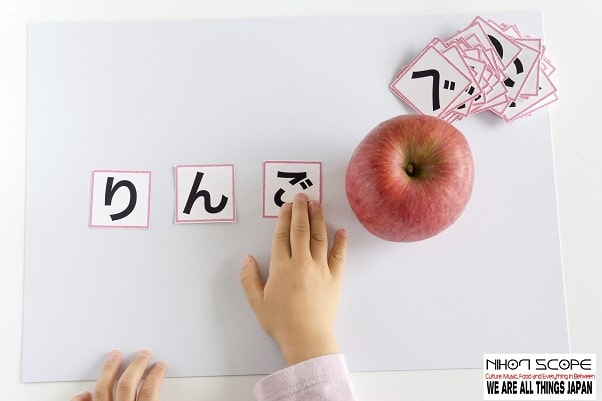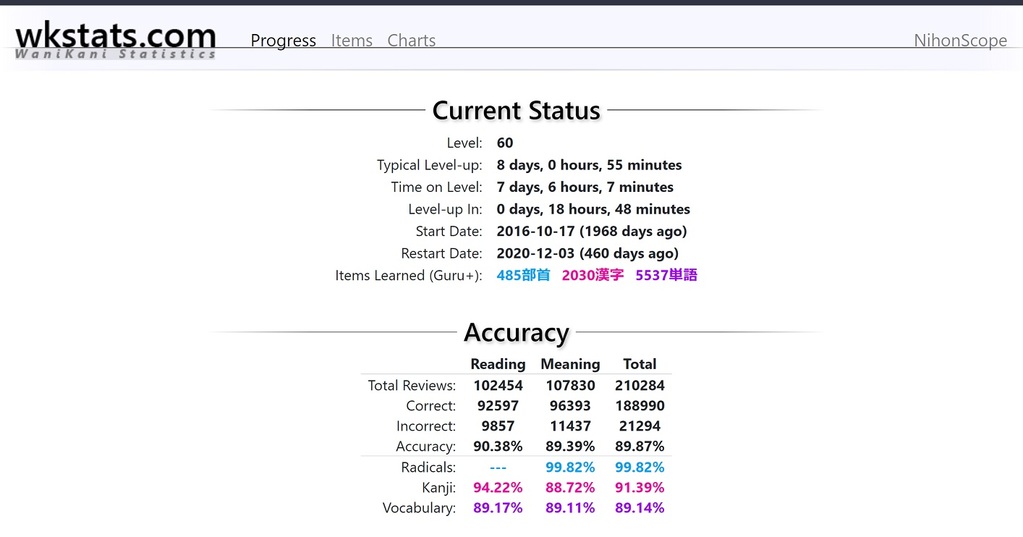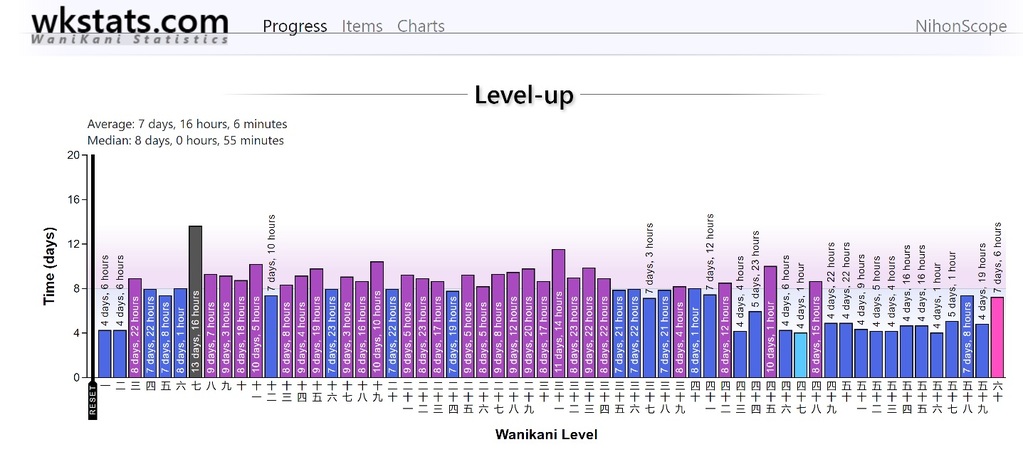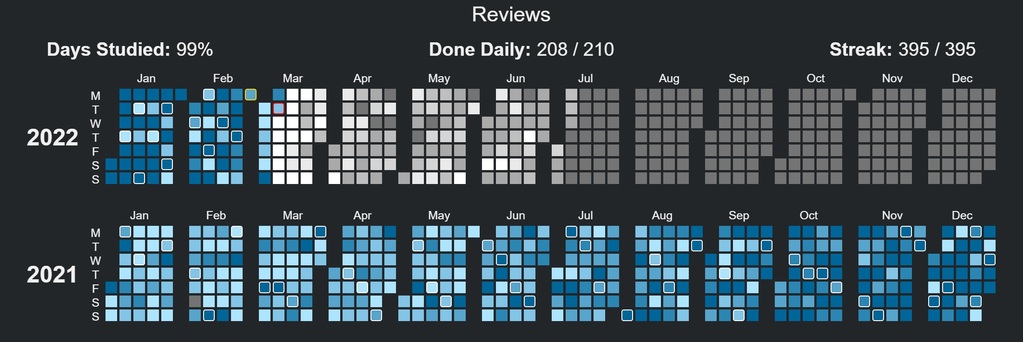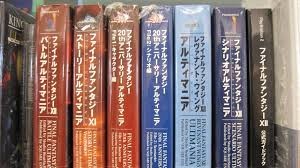The Best Ways For You To Learn Japanese
and for FREE
Check out my ever growing list of Japanese learning resources
below and if you have any to add let me know!
Time to learn Japanese! It’s actually very easy and fun! Japanese is certainly different then English! The written and spoken languages really bound on different aspects. But you would be surprised how quickly you can start to speak and read Japanese. Of course Kanji seems daunting, but over the years of dabbling, I’ve found that the Japanese writing system is actually not too difficult to really figure out at all. In fact in the beginning, you’ll learn hiragana and katakana, which are two ABCDEFG… (etc) based writing systems.
These writing systems are super easy to learn and you could be reading and speaking Japanese within an hour of study. But what does it really come down to when learning Japanese? A certain book, website, event, anime? Well, it really comes to down to using anything that works best for you, and can help you integrate Japanese into your daily life. So I thought I’d share the best ways to learn Japanese (at least in my opinion).
Free Japanese Learning Resources:
 #1 Japanese Through Anime: Ken created this course awhile back and he offers some really great study material. But, of course the big thing here is he answers that age old question of all us otaku. Can you learn Japanese by watching anime? And, Ken shouts off a resounding “YES”. He offers some great free material as well as a paid course. He has tons of free material to check out before you decide to ever take the leap into his course. Now being that I’ve actually been through his course I can tell you that his method of helping you learn Japanese while watching anime, actually DOES work!
#1 Japanese Through Anime: Ken created this course awhile back and he offers some really great study material. But, of course the big thing here is he answers that age old question of all us otaku. Can you learn Japanese by watching anime? And, Ken shouts off a resounding “YES”. He offers some great free material as well as a paid course. He has tons of free material to check out before you decide to ever take the leap into his course. Now being that I’ve actually been through his course I can tell you that his method of helping you learn Japanese while watching anime, actually DOES work!
You’ll soon be catching more words, more grammar and until you know it, you’re actually listening and UNDERSTANDING what is going on. It stills takes some work but if you have it in you, this is one of those study materials you should certainly take advantage of.
Update: After having gone through the program I actually believe this is a brilliant and simple way to start honing your Japanese skills into the future. It’s not as cut and dry as he’d like you to think it is, because you know, marketing. BUT, it doesn’t mean that it doesn’t work. Using this program and then anything else below will help you start actually HEARING Japanese in your favorite anime, but more importantly, in real life too. However, it’s completely up to you how to use your new found listening ability.
 #2 Nihongo Master: This site really helped me kick up my Japanese before I headed out to Japan. It’s actually a fantastic way to learn Japanese, it goes through lessons, then gives you a test. It starts from the basics of learning hiragana and katakana and then starts to works it’s way out teaching you basic grammar all the way to N3 (which is A LOT of content!). When I think back on how much I actually learned from Nihongo Master I’m actually blown away by it. It’s a fantastic online text book in a way that can help you stay accountable for your success.
#2 Nihongo Master: This site really helped me kick up my Japanese before I headed out to Japan. It’s actually a fantastic way to learn Japanese, it goes through lessons, then gives you a test. It starts from the basics of learning hiragana and katakana and then starts to works it’s way out teaching you basic grammar all the way to N3 (which is A LOT of content!). When I think back on how much I actually learned from Nihongo Master I’m actually blown away by it. It’s a fantastic online text book in a way that can help you stay accountable for your success.
#3 Memrise: Is a great place to get some free Japanese lessons, I would be a tad careful using their system because other people can make lessons, and that means there is room for error inside those lessons. But there are really good lessons on Memrise (see Nihonscope’s lessons below), for the most part I like the Core 995 lesson and Memrise has their own couple courses, and there are a few JLPT lessons that you can check out that were created by websites that also teach Japanese, so they can be trusted.
Here are a few courses that were actually created by NihonScope.com for Memrise.com:
- Note that we actually know how to create correct courses with the correct spelling. Other courses in Japanese on Memrise have faults in the way the system sees your answers when spelling out certain words. Our courses are free from that spelling error that others leave in or don’t know how to change.
- 995 Core Japanese Words
- 480+ Japanese Food Words
- 450 Animal Words in Japanese
- 150 Adjectives in Japanese
Minna No Nihongo + Kanji (FFLC) Courses:
- Conjugations of Verbs in Japanese Plain Form
- Conjugations of Verbs in Japanese Te Form
- Conjugations of Verbs in Japanese Nai Form
- First Vocab Book – All 25 Chapters
- Learning Kanji Through Stories
 #4 WaniKani: WaniKani is a program with SRS (spaced repetition system) to help you recognize and read Kanji and vocabulary words. There is around 2000+ Kanji for you to learn and there is around 6000+ vocab words. It takes a bit over a year to go through all this and there is 60 levels to go through.
#4 WaniKani: WaniKani is a program with SRS (spaced repetition system) to help you recognize and read Kanji and vocabulary words. There is around 2000+ Kanji for you to learn and there is around 6000+ vocab words. It takes a bit over a year to go through all this and there is 60 levels to go through.
Now, I’m not someone who is just giving you a review because it’s a popular website to learn kanji from and it would be good to have it here. No. I’m writing out this review for you from the prospective of someone who has made it to level 60 without missing a day of study for 460 days straight (at this point of 3/8/22).
Here is my credentials:
As you can NihonScope is at Level 60 and I have a LifeTime account because, in the end, just because you get to level 60 doesn’t mean you’re done.
Here are some stats showing the length of time it took (around 450 days when I hit Level 60), how many “Kanji” I learned (in red), how many radicals “bushuu” (in blue) and how many vocab “tango” (in purple). I still have some lessons to complete for vocab before I’m completely done at least studying every single component (at least once) inside WaniKani.
This is what my progression looked like moving through the program – Started Dec 3rd 2020
Okay since I got that out of the way I hope you can take this review more seriously than others scattered around the internet.
Despite that I think their forums are littered with people who can not handle someone speaking their minds in earnest, the program itself will give you a skill that very few will ever master outside living in Japan. Ever wonder how someone who doesn’t know a certain vocab/kanji can even pronounce it without knowing it? Well, weirdly enough you start to recognize kanji in the way it looks to other kanji in the same category, you quickly find out that your mind will start understanding some silent rules of pronunciation that very few books ever truly talk about.
Now, does that mean just because a kanji looks similar to others with a certain sound that it WILL be that sound? No, just like in any language there are exception and those are the vocab and kanji you just got to hardwire into your brain. WaniKani can be overwhelming, very easily, when you first start try not to feel like you want to rush it, this is a system of learning that will help keep yourself accountable and will help you memorize more kanji and vocab quicker than you would just trying to repetitiously learning the kanji and vocab over and over again.
Many of these suggested programs I honestly have no affiliated connection to (I don’t make money if you buy a subscription), so I’m just going to tell you. WaniKani can be really amazing overall if you want to truly learn how to read Japanese, if you feel this is just a side hobby of yours, you should take WaniKani at a very relaxed speed. I would always make time to do it every single day because if you don’t you’ll “fall off the wagon” so to speak, and it’s hard to get back on. But you don’t want to overwhelm yourself with too many reviews everyday.
See below I managed to do WaniKani every single day for 460 days straight minus two days that honestly didn’t have any reviews for me to do:
You can also see how many sessions I did and how many hours it took INSIDE the program:
Now it says 360 hours, however with side studying to help learn stubborn kanji and vocab on the side you can easily tack on another 150+ hours for sure over that 460 days. So to get to the point here, it took me answering 210,000 questions to get to the point I am now. It’s not for the faint of heart, you’re literally building a skill that takes even Japanese people years and years to acquire. Especially if you move at a speed like I did, and I didn’t even do as fast as you could. One person literally did it under 1 year, but you don’t have a life hardly, I don’t recommend it.
Now, here is the big part of the review. Can I now read Japanese? Yes and No. I can recognize a lot of different things when I watch videos on youtube where people stroll around cities and film it. Don’t get me wrong, I don’t regret it, but it’s not the end all, WaniKani doesn’t prioritize learning popular vocab, they prioritize LEARNING how to READ Kanji. You’ll still need to work on learning new vocab either in the real world via in Japan or through anime, books, manga etc.
From the point when I first moved to Japan back in 2017, it was very mystical in a way to walk around and have very little idea of what was being said on boards, fliers, stores, restaurants, trains etc. But now since I’ve gone through WaniKani there are times when I feel very much at home, but it all still remains in a place that feel mystical still at the same time. It’s a fun feeling to have actually. I still have a lot of studying and practice ahead of me to get where I want it. But I feel like I’m sort of like a 6th grader or so maybe? Technically speaking you learn up to about 9th grade Kanji and vocabs, however it doesn’t mean that normal everyday things that are out and about in Japan are taught, some things you still need to do on your own.
Now for those looking for a one and done platform for JLPT 1 Kanji, this won’t take you there, but you’ll get close.
So you’ll need to supplement elsewhere, possibly on an Anki deck (which we will be looking for moving forward).
Now being that I said this isn’t for the faint of heart I should elaborate a bit on that. For the most part moving through WaniKani was easy in a humdrum sort of way. As long as you can bring yourself to the computer everyday to work on it, no matter what, you’ll make it through. However around the mid 40’s (levels), you start ending up with these “half levels”, where it can honestly only take 3 1/2 days to complete (I did mine around 4 1/2 days.
But once that happens you start getting swarmed with a lot more kanji, and a lot more reviews. So much so that’s the reason I’ve yet to finish my entire vocab lessons as of yet, my review queues where getting to be ridiculous! So I would recommend if you go through WaniKani and you get to these half levels, don’t rush it, take your time and even slow down on purpose if you have to. Overloading yourself at the end just because you can see the finish line is not my recommendation (like I tried to do). One day I literally did 951 reviews. That’s a lot and it took around 4-5 hours to do it.
Take your time but don’t be slow if you’re truly serious about learning to read Japanese. You’ll probably need more of an excuse than just wanting to read a manga or book to make your way through this beast of a program (just being honest, doesn’t mean you still can’t), but having something to hang over your head like say, LIVING in or going to SCHOOL in Japan might be more of your cup of tea to really TRULY take WaniKani serious.
In the last couple months of WaniKani and the ramp up of reviews and time I was spending on WaniKani, I started to, in a way, lose my mind. I started writing articles on their forums just to relieve my stress of what I was putting myself through. It’s not super easy when you get to these later levels, and up until that point I hardly ever went to bed with any reviews or lessons left to do. The articles below are from those times and you’ll see for yourself that again.. it’s not for the faint of heart. But for those who have strong will power and a REASON to use this new found skill set.
The Truth of WaniKani Levels
A WaniKani Story: What IS So Great About The Number 951?
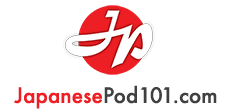 #5 JapanesePod101.com : Japanese Pod 101 is a HUGE website dedicated to Japanese, and I think it’s a pretty good system over all. I and my wife built a huge database of understanding of the language while using Japanesepod101. I like direction when learning Japanese, when left to my own devices I find myself side tracking. Which is why Japanese Pod 101 is #1 in my book right now, it has a lot of options to choose from. From basic sound files that will teach you basic greetings and how to ask for certain items all the way to complex sentence structures and the writing system. Honestly, if I were you and you were super serious, I’d get the personal mentor package, I firmly believe that’s what help me and my wife level up our understanding of Japanese while we were in the care of Japanesepod101! The best way to learn Japanese is to speak and listen to an actual person, and be able to get immediate feedback, honestly, there is nothing better than that except moving to Japan, which you’ll learn more about when you read #8
#5 JapanesePod101.com : Japanese Pod 101 is a HUGE website dedicated to Japanese, and I think it’s a pretty good system over all. I and my wife built a huge database of understanding of the language while using Japanesepod101. I like direction when learning Japanese, when left to my own devices I find myself side tracking. Which is why Japanese Pod 101 is #1 in my book right now, it has a lot of options to choose from. From basic sound files that will teach you basic greetings and how to ask for certain items all the way to complex sentence structures and the writing system. Honestly, if I were you and you were super serious, I’d get the personal mentor package, I firmly believe that’s what help me and my wife level up our understanding of Japanese while we were in the care of Japanesepod101! The best way to learn Japanese is to speak and listen to an actual person, and be able to get immediate feedback, honestly, there is nothing better than that except moving to Japan, which you’ll learn more about when you read #8
 #6 YesJapan.com : George from Yes Japan grew up in Japan when he was a kid and ended up becoming a translator and has done really well doing it. His site is accompanied by his learn Japanese book series called “Japanese from Zero” and I believe there might be 5 book levels, but I’ve only been able to find 4 books. Either way his website at YesJapan.com is basically the digital version of those books. I don’t much care for the website per se, it’s still good mind you, but I much prefer the books over the site. BUT!! He has a HUGE video series he does that you can access even with a free membership, and I’ve been able to pick up some good stuff that I had otherwise not known about the language and on how the customs are in Japan.
#6 YesJapan.com : George from Yes Japan grew up in Japan when he was a kid and ended up becoming a translator and has done really well doing it. His site is accompanied by his learn Japanese book series called “Japanese from Zero” and I believe there might be 5 book levels, but I’ve only been able to find 4 books. Either way his website at YesJapan.com is basically the digital version of those books. I don’t much care for the website per se, it’s still good mind you, but I much prefer the books over the site. BUT!! He has a HUGE video series he does that you can access even with a free membership, and I’ve been able to pick up some good stuff that I had otherwise not known about the language and on how the customs are in Japan.
So I’d say get the books and if you’re serious, I’d say get a membership to simply go through his video series.
 #7 JapaneseClass.jp : Japanese Class is a website I found a long while ago back when it was first really coming about, but I think it certainly has gained my respect over the years. It’s free, but there is donation option if you find you are really digging the lessons. They also have a spaced repetition technique being used on the website. I find this website is great for reading and basic vocab. I think I made it a couple levels in it before I found Japanesepod101 and honestly never really looked back, BUT, I like JapaneseClass.jp and I still think it’s a great way to learn Japanese. In fact, if I remember right I used Japanese Class to learn my Hiragana and Katakana when I first starting with writing and reading in Japanese.
#7 JapaneseClass.jp : Japanese Class is a website I found a long while ago back when it was first really coming about, but I think it certainly has gained my respect over the years. It’s free, but there is donation option if you find you are really digging the lessons. They also have a spaced repetition technique being used on the website. I find this website is great for reading and basic vocab. I think I made it a couple levels in it before I found Japanesepod101 and honestly never really looked back, BUT, I like JapaneseClass.jp and I still think it’s a great way to learn Japanese. In fact, if I remember right I used Japanese Class to learn my Hiragana and Katakana when I first starting with writing and reading in Japanese.
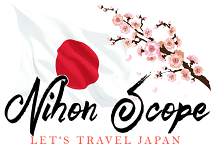 #8 Nihon Scope Travel and School Enrollment: That’s right we’ve gone from experiential blog to a fore front of the industry for school enrollment (finding you the best school to go to) as well as becoming an industry expert in purchasing travel to Japan: affordable tickets, hotels, rail passes as well as tours. That’s just the tip of it. For the moment if you’re looking to book flight or find a school that works for you contact us through our Facebook page here.
#8 Nihon Scope Travel and School Enrollment: That’s right we’ve gone from experiential blog to a fore front of the industry for school enrollment (finding you the best school to go to) as well as becoming an industry expert in purchasing travel to Japan: affordable tickets, hotels, rail passes as well as tours. That’s just the tip of it. For the moment if you’re looking to book flight or find a school that works for you contact us through our Facebook page here.
Don’t go at it alone, we know what it takes to get you to Japan and into that perfect school. We (my wife and I) took the hard road and paid a big price (you can see our review of the school we went to thanks to Go! Go! Nihon). Your trip to Japan is precious, don’t let people who don’t have your best in mind steer you to where THEY want you to go. We don’t have affiliations with schools like Go! Go!, we find the perfect one for you and payment depends on the school we get you into (many times it’s completely free or a small percent). When or if there is a fee it’s usually is there to help you get all the necessary information to be able to go to the school you want. We find ways to always make our services free to students and keep fees and percentages low for tour packages and flights. Just the other day we booked a group airfare from Boston, USA to Osaka, Japan for $600 ROUND TRIP for each person. That’s over 66% off the normal price. We’re all things Japan, what can we say?
We work through Terra Firma Services LLC, dba – we will be adding our travel agency to Nihon Scope here eventually. 🙂
—Here’s a quick list of stuff I’ve been finding that’s pretty cool too:
http://animelon.com:
Helps you learn anime by slowing down the anime and providing much more then basic subtitles
http://www.kanjidamage.com:
This is a huge website with resources on how to read kanji that I suggest.
https://hinative.com:
HiNative is a global Q&A platform where you can ask native speakers any language and culture questions.
https://lang-8.com:
Lang-8 is a language learning platform where native speakers correct what you write.
Kanji Study App:
Kanji Study is my ongoing project that attempts to be an easy to use and helpful app for learning Japanese kanji.
Tae Kim’s – A Japanese Guide to Grammar:
Is a resource for those who want to learn Japanese grammar in a rational, intuitive way that makes sense in Japanese.
What About Rosette Stone?
Notice I don’t suggest Rosette Stone? I personally have NEVER made any REAL progress with Rosette Stone, it just doesn’t really settle in (for me). In fact when I first started becoming interested in Japanese back when I was 14 years old, my parents bought me level 1-2 of Rosette Stone, and I think I made it into the second lesson, and sure I went over those lessons many times over the years, but all I can simply say about it is that I know how to say and hear/understand Yellow, Airplane, Under, Above, Cat, Dog, Man, Woman, Little Girl, Little Boy some more colors… But after that I couldn’t stand it, I couldn’t keep going, because after the 2nd to 3rd lesson, it just gets crazy and the more I traverse this Japanese learning area of the internet, the more I notice I’m not alone for the most part, although some swear by it, but… Not me. I can’t, if it worked for you, that’s freak’n awesome, I guess I try to think too much about whatever little particle means so I couldn’t let myself continue using it because I never could figure it out without having to look stuff up, which then made me not want to do it anymore beyond that point.
Learning Japanese Through Work Books
I’m also a huge fan of learning through books. I’ve literally spent THOUSANDS UPON THOUSANDS of dollars several years ago, trying to find the very best books, software and audio books I could find. I’ve even purchased hypnosis audio tracks for Japanese (which I could say seemed to work well from what I can notice), but I can say this: Out of all the resources I’ve purchased and gone through, it really has come down to only a few books a few websites and a few online teachers that have really pulled their weight…. and funny enough, most of the great resources I suggest are free. These books over all will cost you, but I’d say you could take my experience and opinions and avoid having to pay out ridiculous amounts of money trying to find the best books… and of course, I’ll add anything else here that I come across that I recommend. Remember though, it’s up to you to find your rhythm in how you work best studying and remembering Japanese.
So with that said here are some Japanese learning books I do recommend if you are into book learning:
#1 Japanese from Zero Series – George Trombley
Great book series if you are more into physical work books! Really starts out basic and slowly emerges you into the book series. I notice that he teaches a few things a bit differently then say in other learning programs but I think it’s pretty cool to get a few different points of view when it comes to learning Japanese, so I personally welcomed the few tiny differences in teaching and even saying certain things in Japanese a bit different than taught in other programs. George comes from a very practical background with his teachings, it’s stuff you’ll ACTUALLY USE while in Japan.
#2 Japanese Hiragana & Katakana for Beginners – Timothy G. Stout
This is an interactive book that walks you through these two different writing styles. I honestly thought I knew most of everything I needed to know for Hiragana and Katakana after JapaneseClass.jp but this book proved me wrong, there is several advanced techniques in hiragana and katakana that most regular guide sites and books don’t go over.
#3 Read Japanese Today The Easy Way to Learn 400 Practical Kanji – Len Walsh
Great introduction to Kanji and it’s history of how it’s formed over the centuries. I’d say it’s not just great for getting the basic kanji down, but the history part of this book is well worth it and will help you understand the culture from a writing stand point a bit more then you have before.
#4 Japanese the Manga Way: An Illustrated Guide to Grammar & Structure – Wayne P. Lammers
I found this to be a rather fun book to go through after the long winded introduction of the book. I actually learned A LOT from this book, as long as you have the will to press through this book you’ll really enjoy it and it will be massively beneficial, especially if you are looking to read manga comics in Japanese!
#5 Japanese Step by Step: An Innovative Approach to Speaking and Reading Japanese
I found this book to be great in helping with particles so much that I solely recommend this book singly for that. Although I honestly have not made my way all the through the book yet, but I’m quite impressed with what I’ve gone through so far.
#6 Making Sense of Japanese – What the Textbooks Don’t Tell You aka ‘Gone Fishing’ – Jay Rubin
This is a great book that will help you understand the complexities of Japanese but also helps you see it in a totally different light. I’d say it’s not going to drastically make you better at Japanese, but I’d say for those who are serious, it’s a good book to thumb through.
#7 Shadowing: Let’s Speak Japanese – I’m currently looking into this method. Shadowing is a specific technique to learn Japanese which I’ll be covering later down the road. I’ve not finished this, but it is something to consider!
PRO JAPANESE FLASH CARD LEARNING TRICK:
I recommend flash cards for vocab, hiragana, katakana and kanji. My wife Sasha and I will take these into restaurants and use flash cards while waiting and after eating. It’s a great way to transform idle time spent at a restaurant and over the years I’ve been able to go through several different difficulty packs of flash cards, and honestly when it comes down to it. I don’t think I would ever actually go through the flash cards like I do if we did not create that ritual with learning Japanese. So something to think about, it doesn’t have to be at a restaurant, maybe you have a lengthy ride on the bus or you have idle time during the day. Make it a ritual and use that time to benefit your Japanese over time!
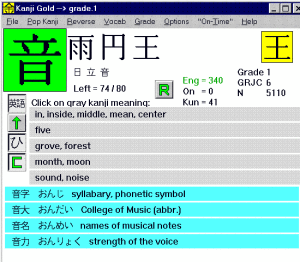 Free Japanese Learning Software I Recommend:
Free Japanese Learning Software I Recommend:
There is one piece of software which I’ve been using since I was 14, is Kanji Gold it’s a simple program that can help you easily recognize kanji, it goes all the way up to grade 10 (or 0), there is thousands upon thousands of kanji in this program. I’ve dabbled with it for quite awhile, and there are many different ways you can use it. I’d say the best way to learn how to use it is simply by downloading it for free and check it out and see if it complements your learning style. This is a great way to at least start recognizing kanji in terms of it’s singular form, but I would also suggest using WaniKani for learning how to say it and what the Kun and On’yami are. But you could thumb through this program to get a crash course before moving on. I’m sure this can help some get their feet wet, but again, I think WaniKani can help much more then Kanji Gold now.
So there you have it, my (mostly free) learn Japanese resources, I’m sure I’ll be adding to this as time goes on but for now. This is way more then enough to help you become fluent quicker in Japanese.
-Nihon Scope

